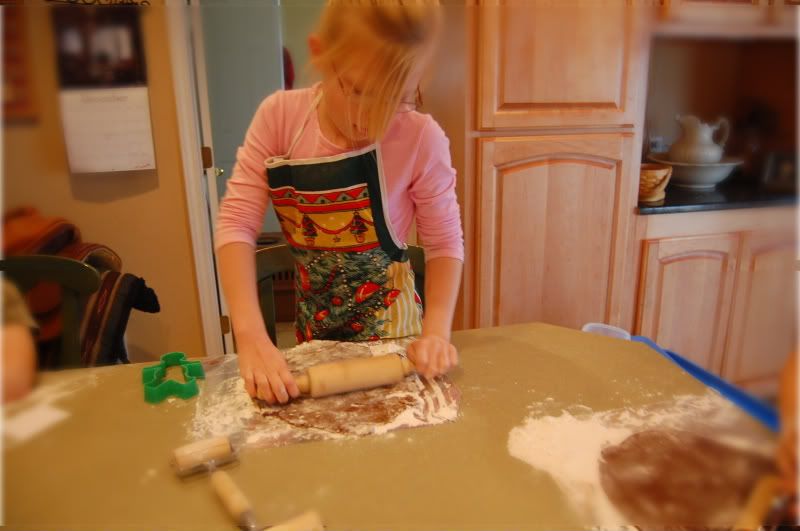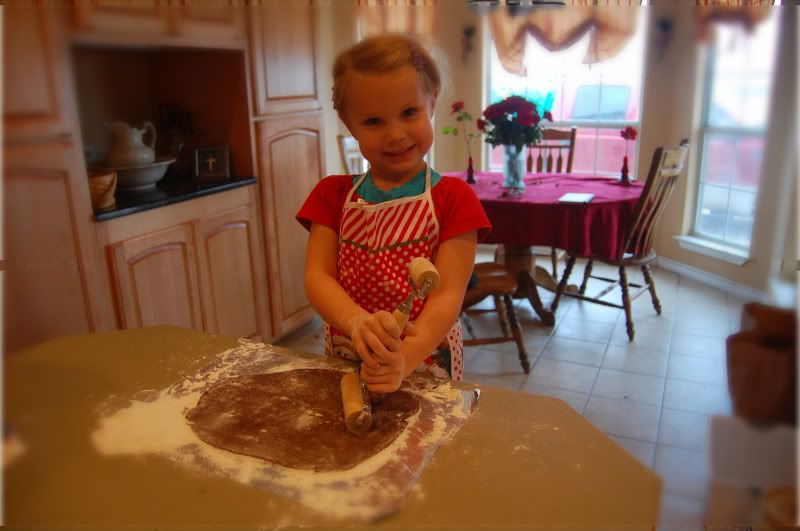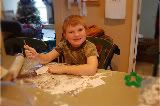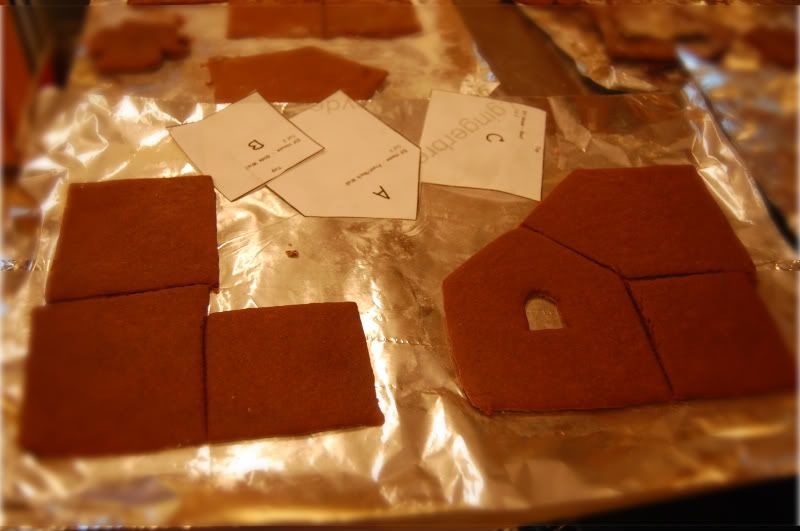

top photo: Miss A with the favored rolling pin. It's obviously so much better than the rest. :-)
I'm so glad I had a rolling pin per child. Of course, one was favored over the rest, but we only had minor complaints. And you thought she was too cute to complain!

Cutting out the gingerbread shapes. By the way, 7 year olds will have crooked shapes regardless of how many templates, rulers, pointers, and knives you give them.
 See, I can cut straight. And, I used a toothpick to label my parts. After this I realized that was probably a waste of time considering that there are only 3 parts. Oh well.
See, I can cut straight. And, I used a toothpick to label my parts. After this I realized that was probably a waste of time considering that there are only 3 parts. Oh well. Tomorrow we will make the royal icing and do some division and word problems while we sort out the candy and decorate our mini-gingerbread village.
Tomorrow we will make the royal icing and do some division and word problems while we sort out the candy and decorate our mini-gingerbread village.More photos soon,
Mrs. P





